|
Subfamily: Mimosoideae
Life
> eukaryotes >
Archaeoplastida >
Chloroplastida
>
Charophyta > Streptophytina > Plantae (land plants)
> Tracheophyta (vascular plants) > Euphyllophyta > Lignophyta (woody plants)
> Spermatophyta (seed plants) > Angiospermae (flowering
plants) > Eudicotyledons > Core Eudicots > Rosids >
Eurosid I > Fabales > Family: Fabaceae
Eighty-two genera and 3275 species (cosmopolitan but absent
from north temperate regions), of which 14 genera and 106 species are native to
southern Africa, an additional four genera and 28 species are naturalised, and
an additional 11 genera and 96 species are cultivated in the region.
Genera native to southern Africa
List from Germishuizen (2000).
Acacia About 900 species, mainly in tropical and subtropical regions,
particularly in Australia and Africa. There are 58 species native to
southern Africa, 17 naturalised, and an additional 62 species that are
cultivated in the region (mainly originating from Australia). Acacia in
the broad sense is not monophyletic and has been split into a number of
different genera. However, there has been controversy over the use of the name
Acacia for the Australian group of species when in fact it belongs to the
African species. African botanical sources are still using Acacia for the
African species and this practice is followed here until there is better
consensus. |
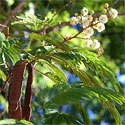 |
Adenopodia About 10 species found mainly in tropical regions. One species,
Adenopodia
spicata, is native to southern Africa. |
|
Albizia About
145 species, distributed from Africa to Asia and Australia. There are 17 species
native to southern Africa, three species that are naturalised to
the region, and an additional eight species that are cultivated in the region. |
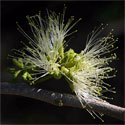 |
Amblygonocarpus One species:
Amblygonocarpus andongensis
(Scotsman's rattle), occurring in the Caprivi Strip (Namibia), Botswana,
Zimbabwe and Mozambique. |
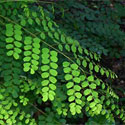 |
Calliandra Two species, native to Africa, with one,
Calliandra redacta,
found in southern Africa (endemic to the Northern Cape, on granite
ridges). |
|
Dichrostachys About 20 species, occurring from Africa to Asia and Australia,
with two, Dichrostachys cinerea and Dichrostachys forbesii, found in southern Africa. |
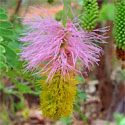
|
Elephantorrhiza African in distribution, with
eight of the nine species native to
southern Africa. |
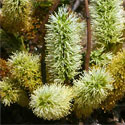 |
Entada The
20 species are native to tropical regions, with six species native to
southern Africa. |
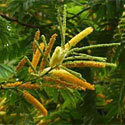 |
Faidherbia One species:
Faidherbia albida (Apple-ring acacia,
Ana tree, Winter thorn), native to tropical and subtropical Africa
including southern Africa. See
Flora of Zimbabwe. |
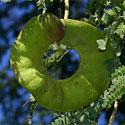 |
Mimosa About 400 species, found throughout the
tropics but mainly in South America. There is one native species and one
naturalised species in southern Africa. Mimosa pigra (Giant sensitive
plant, Raak-my-nie) is a declared Category 3
invasive plant in South Africa. An additional eight species are
cultivated in the region. |
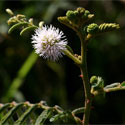 |
Neptunia The
11 species occur in tropical regions, with one species,
Neptunia
oleracea (Water mimosa), native to southern Africa. c |
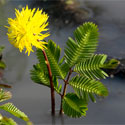 |
Newtonia About
14 species, native to tropical Africa and America, with two species,
Newtonia buchananii (pictured) and
Newtonia
hildebrandtii (Lowveld newtonia), native to southern Africa. |
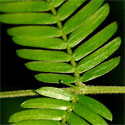 |
Xerocladia One species:
Xerocladia viridiramis
(= Xerocladia zeyheri), found in Namibia and Namaqualand. |
|
Xylia About 12 species, native to tropical Asia and
Africa, with one species, Xylia torreana
(Hairy sand ash), occurring in southern Africa
(in Zimbabwe, Mozambique and the Pafuri region of the Kruger National Park). See
Flora of Zimbabwe. |
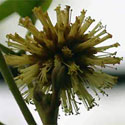 |
Genera naturalised in southern Africa
List from Germishuizen (2000).
Desmanthus Most of the 22 species are native to the tropics and
subtropics of the New World. Desmanthus virgatus
(Hedge lucerne, Bundleflower, Donkey bean) has become
naturalised in southern Africa (near Pietermaritzburg in KwaZulu-Natal). |
|
Leucaena Twenty-four species (Texas in USA to Peru).
Leucaena leucocephala (Leucaena,
Reuse wattel) is naturalised in southern Africa and is a
declared Category 1 invasive plant in the Western Cape,
and a Category 2 invasive plant in
the rest of South Africa. In addition, Leucaena latisiliqua (Lead
tree), native to Mexico, is cultivated in southern Africa. |
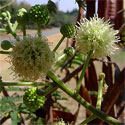 |
Paraserianthes
Paraserianthes lophantha is naturalised, originating from Australia,
and is a declared Category 1
invasive plant in South Africa. |
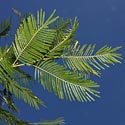 |
Prosopis About 44 species, mainly
native to America but also to SW Asia
and Africa. No native species in southern Africa, but four species have become naturalised in
this region, and an additional three species are cultivated in the region. |
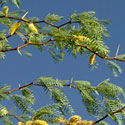 |
Other genera, cultivated in southern Africa
List from Glen (2002). The species name is provided in
genera that have only one species represented in southern Africa.
Adenanthera pavonina (Red sandalwood)
Indigenous from India to southeast Asia. |
|
Archidendron
Two species cultivated, which were previously in the genus
Pithecellobium. |
|
Enterolobium contortisiliquum (Black ear) Indigenous
from brazil to Bolivia. |
|
Gagnebina pterocarpa Indigenous from the Comores to
Mautitius. |
|
Inga laurina (Spanish oak) Indigenous from Mexico to
Argentina. |
|
Lysiloma latisiliqua (Wild tamarind) Native to
Florida (USA) and the West Indies. |
|
Painteria nitida Native to Sri Lanka. |
|
Pararchidendron pruinosum
[= Pithecellobium pruinosum]
Native to Australia. |
|
Parkia About 40 species
(tropics), with two species cultivated in southern Africa. |
|
Pithecellobium Two species cultivated. |
|
Zapoteca portoricensis (White tamarind) Native
from Mexico to Brazil. |
|
Publications
-
Germishuizen, G. 2000. Fabaceae. In: Seed Plants of
Southern Africa (ed. O.A. Leistner). Strelitzia 10: 262-303.
National Botanical Institute, Pretoria.
-
Glen, H.F. 2002. Cultivated Plants of
Southern Africa. Jacana, Johannesburg.
|
